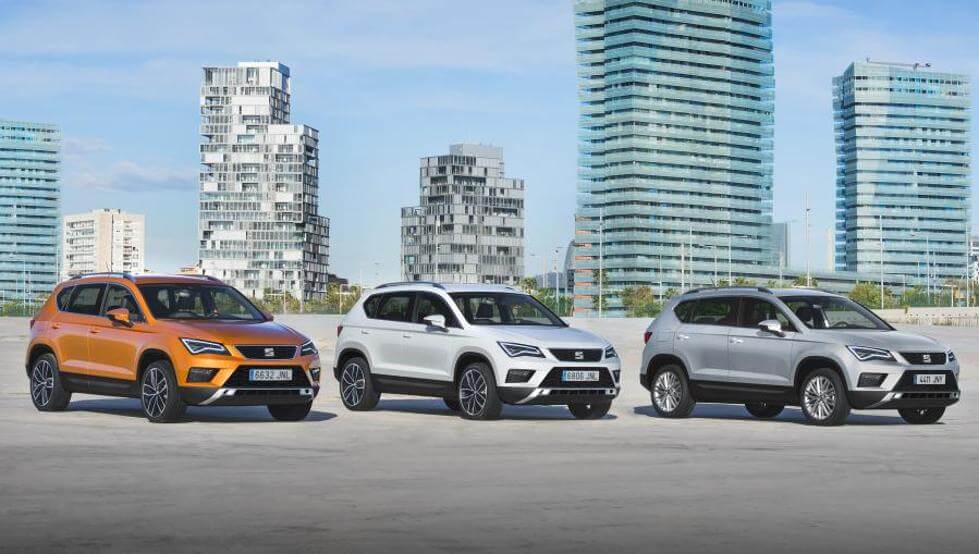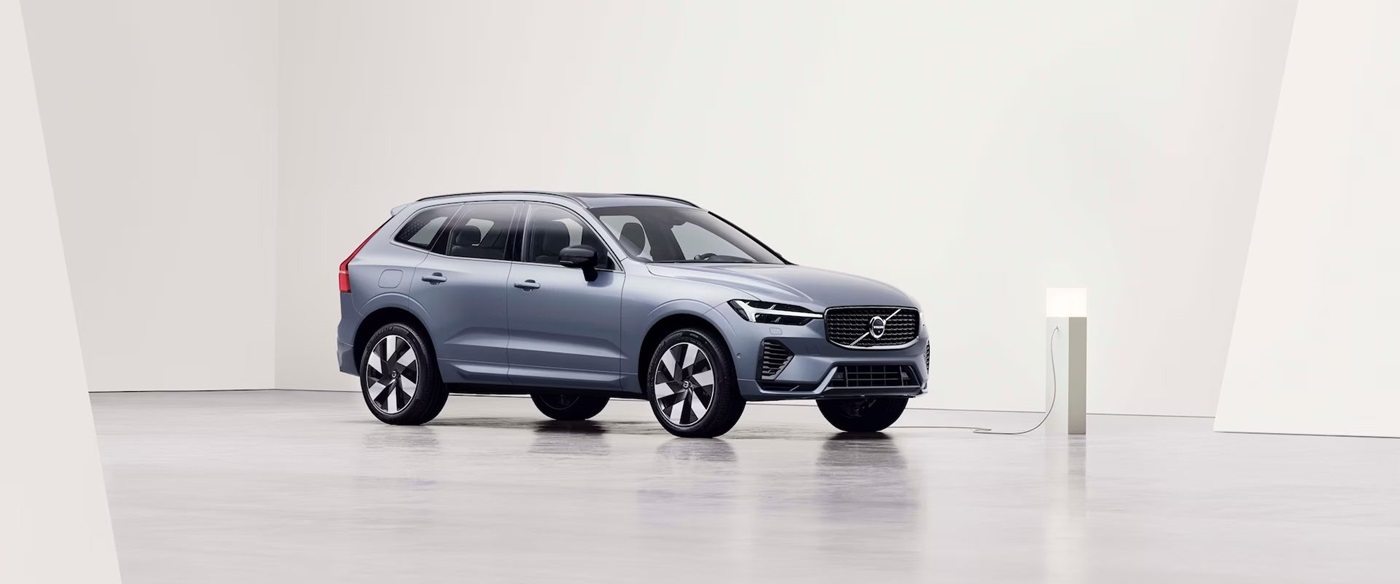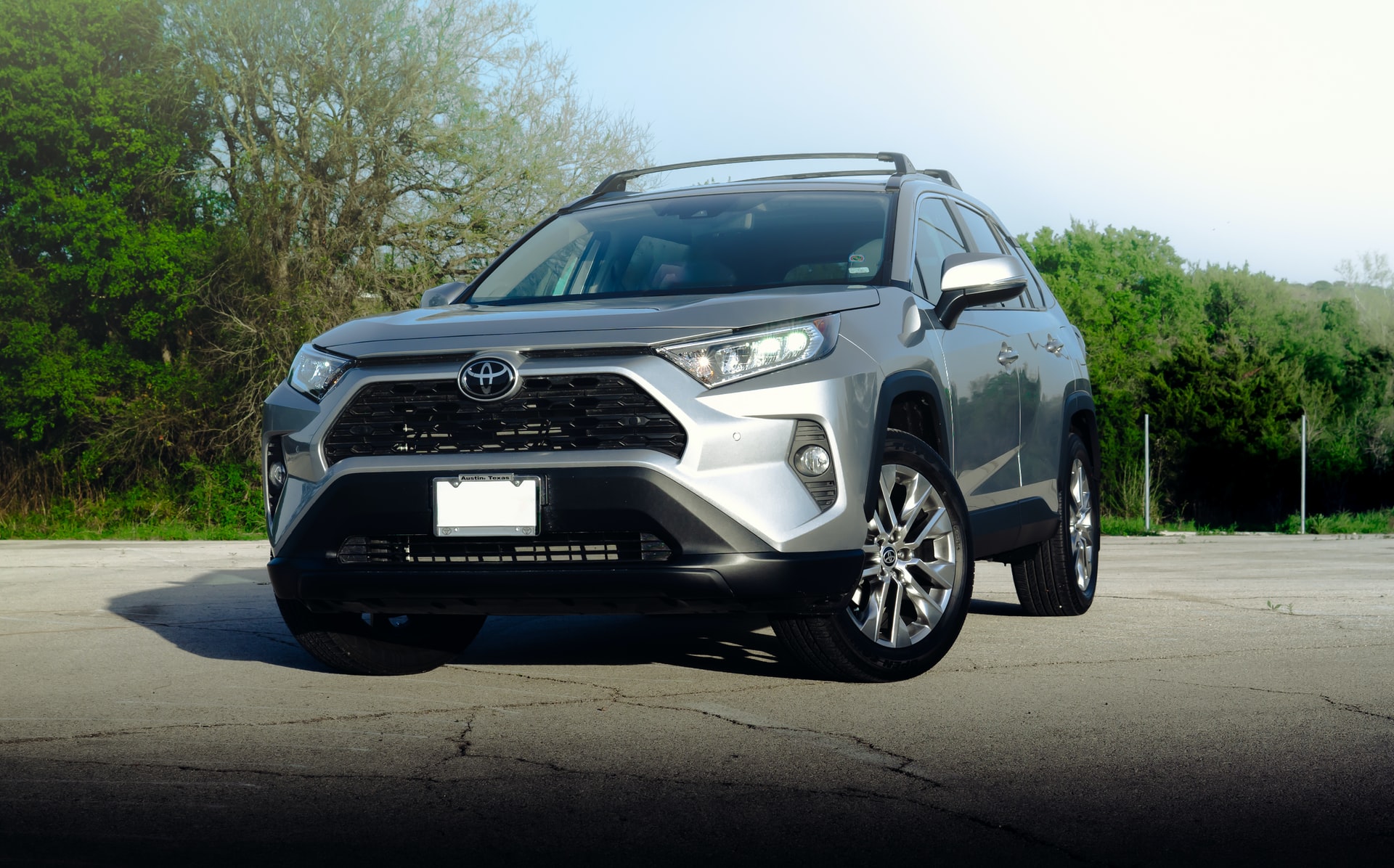
Definition and Usage
SUVs, or Sport Utility Vehicles, represent a versatile and popular class of automobiles. Their design blends elements of passenger cars and trucks, catering to a broad range of needs and preferences. From weekend adventures to daily commutes, SUVs offer a blend of practicality and style.
The SUV category encompasses a spectrum of vehicles, each tailored to specific uses and driver needs. This wide variety ensures there’s an SUV to suit almost any lifestyle and budget. Understanding the distinctions between compact, mid-size, and full-size SUVs is crucial for making informed purchasing decisions.
Types of SUVs
Different SUV categories cater to varying needs. Compact SUVs are generally smaller and more fuel-efficient, ideal for urban driving and city living. Mid-size SUVs offer a balance of space, practicality, and performance, suitable for families and individuals who need a little more room than a compact SUV but less than a full-size model. Full-size SUVs are often the largest and most powerful, providing ample space for passengers and cargo, typically with robust performance features.
SUV Features and Characteristics
SUVs typically possess elevated ground clearance compared to cars, granting better visibility and capability in diverse terrain. They often feature higher seating positions, which enhances driver visibility. Their cargo space is generally more versatile than cars, accommodating larger items. This adaptability makes them suitable for carrying gear, luggage, or equipment. Furthermore, SUVs are commonly equipped with all-wheel drive or four-wheel drive systems, offering improved traction in challenging conditions.
Popular SUV Models
Several popular SUV models from various manufacturers exemplify the versatility of the category. Examples include the Toyota RAV4, a popular compact SUV; the Honda CR-V, a similarly well-regarded compact option; the Ford Explorer, a mid-size SUV known for its family-friendly attributes; the Chevrolet Tahoe, a full-size SUV renowned for its robust build and towing capacity; and the Jeep Wrangler, a compact SUV famous for its off-road capabilities.
Evolution of the SUV Category
The SUV category has evolved significantly over time. Initially, SUVs were primarily designed for off-road use, featuring rugged features and enhanced ground clearance. As demand grew, manufacturers refined their designs to accommodate a wider range of needs. This evolution resulted in a broader range of sizes, styles, and capabilities, from the compact and fuel-efficient to the powerful and spacious.
Comparison Table of SUV Categories
| Category | Size | Fuel Efficiency | Performance | Price Range |
|---|---|---|---|---|
| Compact SUV | Smallest | Generally higher | Moderate | Lower |
| Mid-Size SUV | Medium | Moderate | Good | Mid-range |
| Full-Size SUV | Largest | Generally lower | Strong | Higher |
Cultural and Societal Significance

SUVs, or Sport Utility Vehicles, have transcended their initial utilitarian function and become deeply ingrained in various cultures and societies worldwide. Their popularity is driven by a complex interplay of cultural perceptions, lifestyle associations, and marketing strategies that position them as symbols of status, freedom, and practicality. This analysis delves into the nuanced ways SUVs are interpreted across diverse communities.
The perception of SUVs varies significantly across cultures. While in some places they represent ruggedness and outdoor adventure, in others, they symbolize affluence and social standing. Understanding these varying perceptions is crucial for comprehending the multifaceted significance of SUVs in different societies.
Cultural Interpretations of SUVs
Different cultural contexts lead to varying interpretations of SUVs. These interpretations often align with societal values, aspirations, and economic realities. For instance, in countries with strong emphasis on individualism and personal freedom, SUVs might be associated with independence and self-reliance. Conversely, in collectivist societies, they could be perceived as status symbols, reflecting a family’s success and social standing.
Lifestyle Associations
SUVs are frequently associated with specific lifestyles and values. In some cultures, the spaciousness and versatility of SUVs are linked to family life and the need for carrying multiple passengers and cargo. In others, the perceived ruggedness and off-road capabilities are connected to adventurous lifestyles and a desire for exploration. The image projected through marketing heavily influences these associations.
Marketing Strategies
Marketing plays a pivotal role in shaping the cultural perception of SUVs. Companies leverage advertising campaigns to create specific imagery and narratives that resonate with target audiences. This often involves associating SUVs with desirable lifestyles, values, and aspirations, creating a link between the vehicle and a particular social identity. For example, campaigns might highlight the comfort and luxury of SUVs for families, or their capability and strength for outdoor enthusiasts.
Cultural Interpretation Table
| Culture | SUV Perception | Lifestyle Association | Marketing Strategies |
|---|---|---|---|
| North America (e.g., USA) | Symbol of freedom and independence, often associated with family and adventure | Family vehicles, outdoor enthusiasts, individuals seeking personal expression | Highlighting features like spacious interiors, off-road capabilities, and safety features. Emphasize family-friendly aspects. |
| Japan | Symbol of practicality and versatility, often valued for their fuel efficiency and reliability | Family vehicles, urban commuters, individuals seeking practical transportation | Emphasizing features like fuel efficiency, reliability, and maneuverability. Showcase a blend of practicality and sophistication. |
| Middle East | Symbol of status and wealth, often linked to prestige and social standing | High-income individuals, executives, those seeking to project an image of success | Highlighting luxurious features, high-end materials, and premium brand positioning. Emphasizing exclusivity and status. |
| South America (e.g., Brazil) | Symbol of practicality, used for both family transportation and personal adventures. Often reflects the diversity of the region’s needs. | Family vehicles, individuals seeking versatility for diverse needs, and adventurous exploration | Highlighting features that cater to diverse needs. Emphasizing versatility and practicality, while potentially showcasing cultural nuances. |
Technical Aspects

SUVs, characterized by their versatility and off-road capability, boast a range of mechanical features that distinguish them from other vehicle types. Understanding these technical aspects provides insight into the performance, safety, and capabilities of different SUV models. This section delves into the mechanical components, highlighting engine types, transmissions, drivetrains, and safety features to showcase the diverse technological landscape of modern SUVs.
Engine performance and capabilities vary significantly across SUV models, directly impacting acceleration, fuel efficiency, and overall driving experience. Factors such as engine size, displacement, and type (gasoline, diesel, hybrid, or electric) play a crucial role in determining these characteristics. Different drivetrain configurations and suspension systems further influence the SUV’s performance on various terrains.
Engine Types and Performance
Various engine types power SUVs, each with unique performance characteristics. Gasoline engines are common, offering a balance of power and fuel economy. Diesel engines provide higher torque, which is beneficial for towing or off-road driving, but often come with increased maintenance requirements. Hybrid and electric powertrains are gaining popularity, promising improved fuel efficiency and reduced emissions. Performance varies significantly depending on the specific engine configuration and model. For instance, a larger displacement gasoline engine will typically provide more power compared to a smaller displacement turbocharged engine. Similarly, diesel engines, with their inherent torque, often outperform gasoline engines in towing applications.
Transmissions and Drivetrains
SUVs utilize a variety of transmissions, ranging from traditional automatic transmissions to more advanced dual-clutch or continuously variable transmissions (CVTs). The choice of transmission significantly affects the driving experience, impacting acceleration, fuel economy, and overall smoothness. The drivetrain, including the engine, transmission, and axles, is crucial for transmitting power to the wheels. Front-wheel drive (FWD) is the most common setup, offering a balance of fuel efficiency and cost-effectiveness. Rear-wheel drive (RWD) systems are often found in performance-oriented SUVs, providing a more engaging driving experience. All-wheel drive (AWD) and four-wheel drive (4WD) systems provide improved traction and handling, particularly on slippery surfaces. The type of AWD or 4WD system significantly impacts the SUV’s performance and capabilities in challenging conditions.
Safety Features
Safety features in SUVs are crucial for driver and passenger protection. Anti-lock braking systems (ABS), electronic stability control (ESC), and airbags are standard across many models. Advanced driver-assistance systems (ADAS), such as lane departure warnings and adaptive cruise control, are becoming increasingly prevalent. Higher-end SUVs often incorporate advanced safety features like blind-spot monitoring, parking assistance, and automatic emergency braking. Safety features directly influence the SUV’s crashworthiness and driver assistance, impacting overall passenger protection.
Suspension Systems
SUVs use various suspension systems tailored to their specific needs and intended use. Independent suspension systems, such as MacPherson struts or double wishbones, offer a balance of comfort and handling. Multi-link suspension systems provide a more sophisticated setup, offering enhanced performance on rough terrain. The type of suspension impacts the SUV’s ride quality, handling characteristics, and off-road capabilities. Different suspension designs are optimized for varying driving conditions, whether it’s on-road comfort or off-road performance.
All-Wheel Drive (AWD) and Four-Wheel Drive (4WD) Systems
AWD systems continuously distribute power to all four wheels, providing enhanced traction in various conditions. 4WD systems, on the other hand, typically engage all-wheel drive only when needed, usually when the wheels lose traction. The specific design of each system influences its performance and efficiency. AWD is often more suitable for everyday driving, while 4WD is better suited for severe off-road conditions. Examples of different 4WD systems include part-time and full-time 4WD, each having its own set of advantages and disadvantages.
Drivetrain Components
Diagram of an SUV Drivetrain
This diagram illustrates the various components of an SUV’s drivetrain, including the engine, transmission, transfer case, and axles, and their interconnected roles in transferring power to the wheels.
This detailed diagram visually represents the interconnected components of an SUV’s drivetrain, showcasing the engine, transmission, transfer case, and axles. The illustration clarifies the flow of power from the engine to the wheels, highlighting the crucial role of each component in ensuring optimal performance and traction.
Environmental Impact

SUVs, while popular for their versatility and perceived off-road capabilities, often come with a significant environmental footprint. This impact stems primarily from their size and weight, which contribute to increased fuel consumption and emissions compared to smaller vehicles. Understanding these impacts is crucial for informed consumer choices and promoting sustainable transportation options.
The environmental impact of SUVs is multifaceted, encompassing not only fuel consumption and emissions but also the manufacturing processes and the overall lifecycle of the vehicle. This section delves into the various aspects of the environmental impact, including fuel efficiency ratings, carbon footprints, and technological advancements aimed at mitigating these effects.
Fuel Consumption and Emissions
Fuel consumption and emissions are directly related to the size, weight, and engine technology of an SUV. Larger SUVs generally consume more fuel and produce more emissions than smaller models. This difference is magnified when considering driving habits and road conditions. Aggressive driving and poor road conditions can increase fuel consumption and emissions even further. Factors such as terrain and driver behavior influence the fuel economy and emissions produced by SUVs.
Fuel Efficiency Ratings
Different SUV models exhibit varying fuel efficiency ratings, reflecting differences in engine technology, transmission type, and overall vehicle design. These ratings are typically expressed in miles per gallon (MPG) for both city and highway driving. Lower MPG values indicate higher fuel consumption and greater emissions.
Carbon Footprint of Different SUV Types
The carbon footprint of an SUV depends on several factors, including the vehicle’s size, engine type, fuel efficiency, and the manufacturing process. Electric SUVs, for example, generally have a lower carbon footprint compared to gasoline-powered SUVs throughout their lifecycle. The carbon footprint is also affected by the source of the fuel used to power the vehicle.
Technological Advancements
Numerous technological advancements aim to reduce the environmental impact of SUVs. These include improvements in engine efficiency, the adoption of hybrid and electric powertrains, and the implementation of advanced aerodynamics. For instance, some SUVs utilize regenerative braking systems to recapture energy during deceleration and store it for later use, thus reducing fuel consumption. The development of lightweight materials and improved manufacturing processes further contribute to reducing the overall environmental impact.
Comparison of Fuel Efficiency
| Model | Fuel Type | MPG (city/highway) | CO2 Emissions (per 100 km) |
|---|---|---|---|
| Toyota RAV4 Hybrid | Hybrid | 40/41 | 95g |
| Ford Explorer | Gasoline | 17/24 | 150g |
| Chevrolet Tahoe | Gasoline | 13/19 | 170g |
| Tesla Model X | Electric | N/A | 0g (emissions from electricity source varies) |
Note: Values are approximate and may vary based on specific trim levels and driving conditions. CO2 emissions are estimates and can be affected by factors like the fuel type and electricity source.
Historical Context
The SUV, a ubiquitous vehicle in modern society, has a rich and evolving history. Its journey from a niche off-roader to a mainstream family vehicle reflects changing societal needs, technological advancements, and shifting consumer preferences. This section delves into the key milestones that shaped the SUV’s development, highlighting its role in different eras and societies.
The SUV’s design and engineering have evolved significantly since its inception, adapting to evolving consumer demands and technological progress. Early models prioritized ruggedness and off-road capability, while modern SUVs often prioritize comfort, fuel efficiency, and advanced features.
Evolution of SUV Design and Engineering
The evolution of SUV design and engineering reflects a continuous push for better performance, safety, and efficiency. Early SUVs were built primarily for off-road use, featuring boxy shapes, high ground clearance, and robust suspensions. As demand grew, manufacturers began to refine the designs, introducing features like improved interior space, more refined powertrains, and enhanced safety systems. This evolution has led to a wide range of SUV models today, catering to diverse needs and preferences.
Key Milestones in SUV History
Significant advancements in SUV technology and design have marked distinct periods in its history. The initial designs prioritized off-road capability, evolving into a more varied range of models.
- 1980s: The 1980s witnessed the emergence of the SUV as a popular vehicle. Early models, often based on truck platforms, were characterized by their ruggedness and off-road prowess. Examples include the Jeep Cherokee and the Toyota 4Runner, which established a foundational design aesthetic for the future. Manufacturers began to recognize the growing demand for a more refined and comfortable off-road vehicle. This period laid the groundwork for the more diversified range of SUVs to come.
- 1990s: The 1990s saw a surge in SUV popularity, with manufacturers introducing more refined designs and features. This era saw the emergence of more passenger-oriented models, incorporating improved interior comfort and greater versatility. Examples include the Ford Explorer and the Chevrolet Tahoe. The increased emphasis on passenger comfort and interior space signaled a shift from solely off-road focus to a more family-oriented approach.
- 2000s: The 2000s witnessed a significant increase in SUV sales, driven by factors like improved fuel efficiency and safety features. Manufacturers introduced more sophisticated engines and transmissions, as well as advanced safety systems. This period saw a growing variety of SUV models catering to various needs and preferences. Examples include the growing range of crossover SUVs from brands like Honda and Mazda, reflecting the growing popularity of this segment. The incorporation of advanced technology, such as driver-assistance systems, became a key feature.
- 2010s: The 2010s marked a period of significant innovation in SUV design and engineering. Manufacturers introduced more fuel-efficient engines, improved safety features, and advanced technology, including connectivity and infotainment systems. The emphasis shifted towards luxury and performance features. Examples include the introduction of plug-in hybrid and electric SUV models, reflecting a growing awareness of environmental concerns. This decade saw the rise of SUVs as premium vehicles, often surpassing traditional passenger car segments in terms of sales.
Role of SUVs in Different Eras and Societies
The role of SUVs has evolved significantly across different eras and societies. In the early years, SUVs were predominantly associated with outdoor activities and off-road adventures. Over time, their role expanded to encompass family transport, commuting, and even luxury.
Timeline of Significant Events in SUV History
| Year | Event | Impact |
|---|---|---|
| 1980s | Emergence of SUVs as a popular vehicle | Established a foundation for future designs, reflecting increasing demand for a comfortable off-road vehicle. |
| 1990s | Introduction of more passenger-oriented models | Marked a shift from solely off-road focus to a more family-oriented approach. |
| 2000s | Significant increase in SUV sales; introduction of advanced technology | Reflects the growing variety of SUV models catering to various needs and preferences. |
| 2010s | Focus on luxury, performance, and advanced technology | The rise of SUVs as premium vehicles. |
